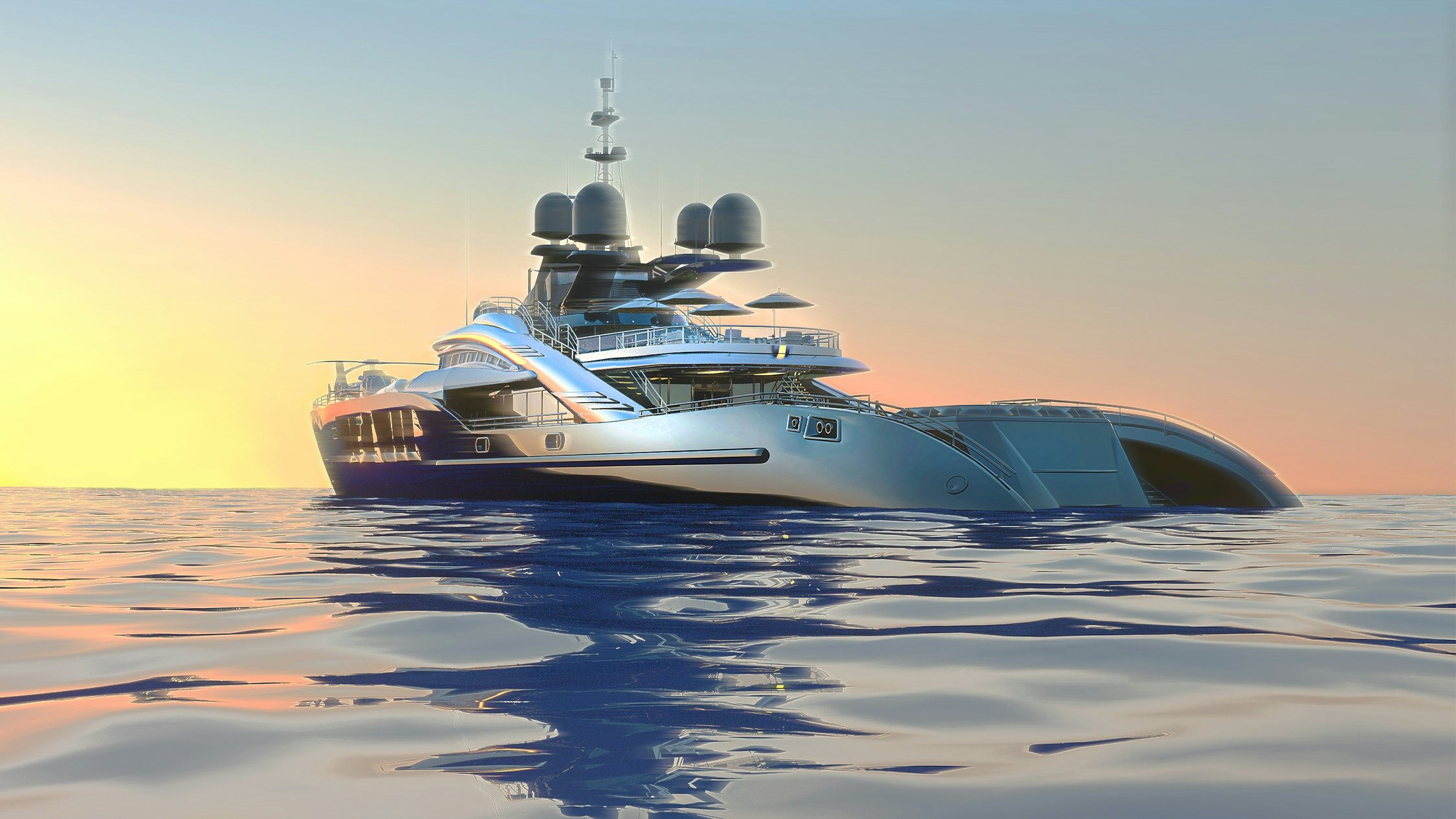Among the many foreign luxury industries to enter China in the last two decades, only a select few have yet to make an impact. One such industry is yachting, which for years has been a favorite of ultra-rich cultures in Europe and America. Factors ranging from culture, economic and financial instabilities, and unfit sailing entrances have left the industry comparatively crippled in China and yet to see much development.
Arguably the world's largest economy, China's wealthiest individuals are slowly beginning to show interest in this relatively 'foreign' industry. With the largest number of millionaires in the world, China's rich are actively seeking the best in luxury goods, which revolved primarily around the automotive industry and the fashion/designer labels industry for many years. Of the high number of Chinese high-net-worth individuals (who account for more than 70 percent of the country's wealth), only an estimated 0.3 percent own yachts.
An Unexpected Disinterest#
As China's economy keeps growing, both foreign and domestic yacht manufacturers are eager to stimulate demand in the market, especially as growth in existing global yacht markets has been slowing over the last decade. Surveys in China conducted throughout this decade point to some growing interest, with 16 percent of Chinese HNWI respondents planning to purchase a yacht soon and roughly half expressing some interest in the idea. But despite an anticipated fortune to be made in China, there’s still a vacancy for a market leader, and sales results still aren’t there.
Industry experts are somewhat baffled by the disinterest in their product, arguing that there’s a variety of factors that are in favor of development. The potential for success can be seen simply by examining the existing government support for the yachting industry as well as a positive forecast of the domestic market's recovery.
Favorable conditions#
Lately, there have been many positive government implementations regarding the yacht industry and maritime activity in general, and China is seeing a trend of loosening regulations. At the beginning of this decade, the country saw new, liberalized conditions and guidelines for yacht registration and overseas-yachts’ entry/exit procedures, as issued by The Ministry of Transport and the Maritime Safety Administration (MSA), the two dominant forces in the regulatory arena.
More recent years saw a further removal of barriers regarding yacht ownership, and have refined clear marine traffic rules. The last three major changes made to the provisions were the widening of the navigability range, a simplifying of examination/approval procedures, and an allowance of yacht registrations for non-residents. All these major improvements are clear indications that the government wants to develop the market, as maritime legislation didn’t distinguish between commercial boats and private ones just a few years prior.
Another factor that promises good fortune in the industry is how China has an ideal geographical landscape. The country is home to a coastline of 18,000 kilometers in length, 24,800 usable lakes, about 6,500 islands (with 14,000 kilometers of coastline), and four major river systems, all of which have already been extensively used by cruise ships but could be used for yachting as well. The physical area for development is practically limitless, but the question remains: Why is the market struggling to thrive?
Yachts traditionally serve four main purposes for a user: sailing, sports, leisure, and entertainment.
Understanding the Target Market#
Yachts traditionally serve four main purposes for a user: sailing, sports, leisure, and entertainment. For the wealthy Chinese consumer, the latter use would be the common one. In the current environment, considering that the elite Chinese population has little interest in laying in the sun, the primary use for these luxury boats would be as a business frontier to hold meetings, events, and similar business-oriented gatherings.
Yet the cultural perception of yachting is that it’s less beneficial compared to other common activities enjoyed by the wealthy. Market surveys show that common leisure activities occupying wealthy Chinese include things such as golf, swimming, spas, and yoga. Such activities are well-known in Chinese culture for providing health benefits and can even be seen as beautifying, both of which are of major value in the culture. The sport of yachting, for the most part, doesn’t produce similar physical benefits, and the benefit of exposure to the sun isn’t desired by the Chinese culture, as being tan is usually unwanted (despite any potential health benefits). It’s therefore been argued that much of the distance between target consumers and the industry should be attributed to cultural preferences and perception.
Water, as a body, is regarded as a "yin" force, meaning negative or dark. Water's usage in Chinese culture was and still largely revolves around transportation or a source for food. Spending leisure time in the water is not very common, especially for higher-income individuals.
Another finding shows that Chinese HNWIs exhibit "hard-to-please" behaviors and want products with high value, quality, and frequent usage, as they place more value on a "functional benefit” rather than an "emotional benefit." Therefore, wealthy Chinese consumers might regard leisurely sailing on a yacht as having no merit and will see it as a financial burden to boot. But if the perception of the activity were to move away from conventional yacht usage in the Chinese market, the value might increase.
Whether existing market products are of insufficient quality or simply do not portray the image of wealth desired, it’s not impossible for perception in China to change. A silver lining in the survey results points out that due to the constant growth of HNWIs, purchasing behaviors and preferences in China are transforming quickly. Over half of the current wealthy consumers were not wealthy five years ago, and this pattern has been repeating for the last two decades. The research points out that in cases such as this, purchasing behaviors can drastically transform into unexpected areas. This means that preferences are prone to change and can be shaped if an industry chooses to actively pursue them. In fact, a lack of awareness and brand recognition offers room for new entrants to set trends.
Questionable Alliance Leads to Definite Disappointment#
In 2012, a strategic alliance between the Chinese diesel-engine enterprise Weichai Group and the world-renowned Italian yacht manufacturer Ferretti Group was confirmed. The well-respected Italian manufacturer had struggled for years with financial gains and agreed to 75 percent of its stakes being acquired by Weichai to initiate development in China. The questionable alliance, however, hasn’t progressed due to a failure to adapt to Chinese consumer's preferences, and instead, is promoting conventional yacht use in the country. Chinese users tend not to sleep on board, and keep their yachts docked, serving simply as guest-hosting locations for karaoke and business-oriented gatherings.
According to industry insiders, a big challenge for the industry is a lack of yacht clubs, which provide services and education. Many distributors and even some manufacturers have invested in clubs since you have to teach people about yachting before they will buy yachts. This is true and provides a plausible reason for the lack of market interest.
Product Preferences#
If the personal use of yachts remains low among the wealthy of the country, a plausible alternative can be to focus on rental services for sightseeing, photography, and private parties. Currently, many marinas and yacht clubs are developing such services in the country alongside standard berths and maintenance services.
Rather than specializing yachts for personal leisure use, they should be customized to fit the expected use of the customers, which is more oriented toward exclusive event hosting, casual-business gatherings, and entertainment for private guests or friends. This can be achieved by supplying the yachts with equipment and design familiar to Chinese consumers, including existing forms of entertainment (karaoke equipment, large minibars, food & beverage serving options, tea-tables, and Chinese cultural games such as Mah Jong). The interior design should also feature familiar cultural elements (strong colors, wooden/jade-stone cultural furniture, symbolic art, and more).
As for vessel sizes, favored sizes are significantly smaller than in more developed countries. Manufacturers should focus on vessels ranging from 12-26 meters and consider making the shaded interior part of the boat larger, as yacht recreation in China may be largely spent inside a walled or shaded room. This can cater to various gatherings that commonly take place in a closed environment in China like eating, drinking, singing, playing games, and engaging in business.
Entry Modes#
As in any field, entering the Chinese market as a foreign entity can come with an array of difficulties. Selecting the proper entry mode and strategy is sometimes the deciding factor for a venture’s success and can dictate whether a company will thrive and be sustainable in the long run. In many cases, companies choose the initial step of selling through distributors and dealers, or through representative offices, as these methods are simpler and require lower investments while still creating brand awareness. These, however, are not long-term strategies, as they lack a direct presence and don’t usually yield the desired returns.
This is when direct-presence options like joint-ventures are required (Ferretti and Weichai Group, for example). This gives the foreign side access to existing infrastructure, customer databases, and other resources, while the local side gets access to a foreign outlook and the expertise of a player in a part of the field that’s more developed. For the last resort of setting up WFOE's, depending on the business scope, there may be two favorable methods. The first is a manufacturing WFOE, which manufactures and sells yachts domestically and internationally. The second one is a Foreign Invested Commercial Enterprise (FICE), which imports and exports yachts domestically.
As several companies have previously done, instead of targeting the rich within China, they merely use China as a manufacturing and assembly base for the yachts that are to be exported later to neighboring countries in the region. This is due to the low-cost manufacturing available in the country (20- 30 percent cheaper than Europe) and its strategic position for accessing the rest of the Asian market and Australia. Focusing on the export market however, in the long run, might prove to be less beneficial than the more hopeful approach of succeeding in the Chinese market.
A large majority of foreign entrants referred to selling through distributors and dealers, while the two recommended methods of JVs and WFOEs rank lower by a large margin. This could explain the slow development of the industry. If there was more physical presence from foreign brands in the market, awareness and interest would also likely to increase. Being physically present without relying only on local distributors can assist the company in learning about cultural and consumer preferences, witnessing developments and trends from local competition, and having a clearer idea of product specifications that are favorable in the market.
There is hope#
The development of the Chinese yachting industry is still in its early stages and is missing some important elements. Adding those will surely incentivize development across a whole range of operations. In order to properly develop a reputable industry with a strong base, the early stages of development are critical in setting high-standards and creating a positive image in the minds of future participants.
The low demand in the Chinese market should not discourage foreign entrants from pursuing their goal of global expansion into this arena. Despite all the figures, experts still argue that it is inevitable that China will sooner or later be the center for leisure-vessel trade and activity. While the scene might largely differ from Europe or the US in terms of usage, China is capable of creating its own unique yacht sailing scene. It is more likely that the conventional use of yachts around the world will not flourish in China due to the factors discussed, and the field will require a new vision to alter how yachts are perceived.

